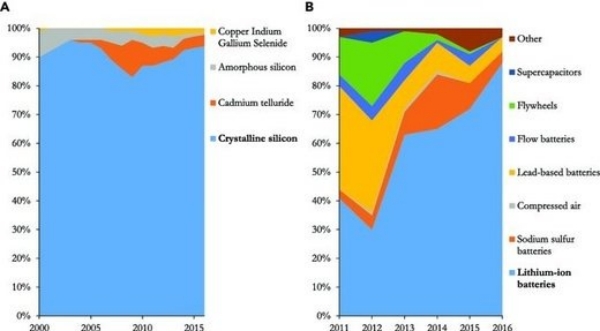Innovation in Clean Tech is still needed
SORELY needed…
Almost two years ago, Mr. Varun Sivaran explained “Why We Still Need Innovation in Successful Clean Energy Technologies”. Since his point is even more valid now than it was in 2018, I am synthesizing it here.
The piece linked above presents a longer paper by Sivaram and others, about The Need for Continued Innovation in Solar, Wind, and Energy Storage, and its main points are that:
- Power from solar and wind farms is now routinely sold at prices below that of electricity from fossil-fueled generators, and cheaper batteries are fueling [electric vehicles and many other projects].
- Governments around the world might conclude that innovation in solar, wind, and energy storage is no longer a priority.
But such a conclusion would be a mistake, because the current situation hides an underlying stagnation. In each case, a single dominant technological design has emerged, and all is happening now is that the private sector is optimizing that design, and its manufacturing and supply chains:

here
</em></u>
The fact that the two charts above are almost completely filled by one color, light blue, means just that:
- crystalline silicon panels (left chart) enjoy an increasing near-monopoly in solar photovoltaic energy…
- and that the same happens (right chart) with lithium-ion batteries in the grid-scale energy storage market…
The wind energy sector is in the same situation, with horizontal-axis wind turbines having a “virtually 100% market share” for decades now.
And this is bad because…
“While these “dominant designs” have made clean energy more competitive with fossil fuels in the near term, they pose a significant risk in the long term: “technological lock-in."
“Technological lock-in” is what happens with e.g. proprietary batteries, or charging systems, for smartphones: if you buy a smartphone with that problem, you are forced to buy only one brand of batteries, or chargers, even if they are overpriced, or inferior.
With lock-in, “new technologies struggle to achieve commercial traction even if they are superior to existing ones”, and this, said Sivaram and his colleagues argued two years ago, is just what is very likely to happen in these three crucial fields: the private sector, being forced by its own nature to only seek short term profits, cannot afford serious investments on research of new technologies, only on optimizing the existing one(s).
This is why governments around the world, argues the paper, should step in to boost funding for research, development, and demonstration of new solar, wind, and battery technologies that have the potential to outperform the current market leaders. These technologies will not attract substantial private investment without such public support.
(My) Translation:
To unleash REAL innovation, you need proactive governments. We already knew that, of course. Or we should.
Who writes this, why, and how to help
I am Marco Fioretti, tech writer and aspiring polymath doing human-digital research and popularization.
I do it because YOUR civil rights and the quality of YOUR life depend every year more on how software is used AROUND you.
To this end, I have already shared more than a million words on this blog, without any paywall or user tracking, and am sharing the next million through a newsletter, also without any paywall.
The more direct support I get, the more I can continue to inform for free parents, teachers, decision makers, and everybody else who should know more stuff like this. You can support me with paid subscriptions to my newsletter, donations via PayPal (mfioretti@nexaima.net) or LiberaPay, or in any of the other ways listed here.THANKS for your support!